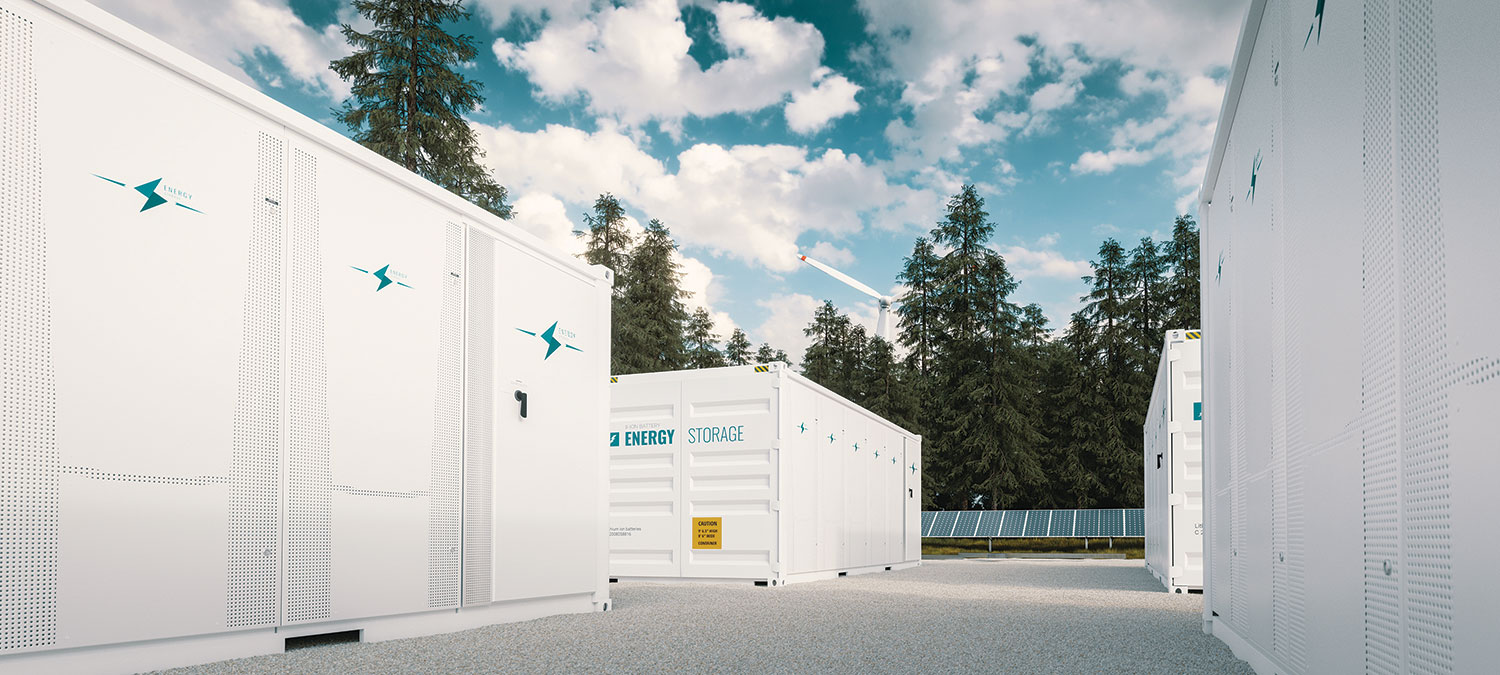by Aditya Iyer, Project Engineer
With increasing use of alternative energy sources, energy storage systems (ESS) have proliferated the industry in recent years. As an electrical inspector, you are probably familiar with the installation requirements set forth in the National Electrical Code (NEC) for the safe installation of ESS, but you might not be as familiar with the safety standard that regulates these products. Before we take a look at the requirements for ESS set forth in ANSI/CAN/UL 9540, let’s go over some ESS fundamentals.
ESS Background
In the renewable energy industry, ESS are used to do exactly that: store energy that is generated by sources like wind or solar. ESS receive electric energy, store the energy in some form, and then provide electrical energy to loads or power conversion equipment when needed.
The systems covered can be:
- Standalone system to provide energy for local loads or
- In parallel with an electric power system, electric utility grid
- Able to perform multiple operational modes – for use in utility-interactive applications in compliance with IEEE 1547 and IEEE 1547.1 or other applications intended to provide grid support functionality
The types of ESS technology, along with the input conversion, energy storage, and output conversion mechanisms are outlined below.
| Technology | Input Energy Conversion Mechanism | Energy Storage Mechanism |
Output Energy Conversion Mechanism |
| Electrochemical | Charger | Battery | Converter |
| Chemical | Water Electrolysis H2 Generator | Hydrogen Storage | Fuel Cell |
| Mechanical | Air Compressor | Flywheel | Motor Generator |
| Thermal | Heat Pump | Thermal Storage | Heat Generator |
ANSI/CAN/UL 9540:2020
In North America, the safety standard for energy storage systems intended to store energy from grid, renewable, or other power sources and related power conversion equipment is ANSI/CAN/UL 9540. It was created to ensure that electrical, electro-chemical, mechanical, and thermal ESS operate at an optimal level of safety for both residential and industrial energy users. As ESS evolve in capabilities and technology, UL 9540 has been updated to address these changes.
The UL 9540 standard includes relevant requirements for construction, performance, and documentation like marking and instructions. Other areas that are covered include new concept systems like mobile energy storage systems (MESS) along with large scale fire testing in accordance with UL9540A, which was developed to address the potential fire and explosion hazards associated with a battery system, such as an uninterrupted power supply (UPS) or battery energy storage system (BESS).
Considerations for ESS Construction
When constructing ESS, the following aspects must
be addressed:
- Enclosure (IP rating, material, protection for hazards, etc.)
- Additional requirement for walk-in ESS system
- Wiring and electrical supply connections
- Major critical components, such as fuses, circuit breaker, switch, and transformer, etc.
- Electrical spacing and circuit separation
- Insulation level and grounding
- Safety analysis and control systems
- Remote control and communication system
- Heating / cooling systems and related fluid hazard control
- Moving parts in mechanical ESS
- Combustible vapor concentrations (LFL – 25% limit)
- Fire detection, suppression and propagation
- Fire detection and fire suppression equipment installation
- UL 9540A testing
- Power conversion equipment (inverter, converter, etc.)
- Energy Storage System Technologies
ESS Testing Requirements
ANSI/CAN/UL 9540 includes specific performance testing requirements for ESS:
- Normal operations
- Dielectric voltage withstanding
- Impulse
- Equipment grounding and bonding
- Insulation resistance
- Electromagnetic immunity
- ESS with containment of moving parts
- Leakage
- Strength (hydrostatic, pneumatic)
- Wall mount fixture
- IP or type ratings
- Salt fog
- Vibration testing per seismic rating
ESS Marking and Instruction Requirements
ESS marking and warning label materials must meet UL 969, with wording size and color as guided per ISO 3864-2, NEMA Z535.1, etc. Specific content that must be included on the marking label includes:
- Standard product information like manufacturer name; part/model #; electrical rating, etc. (a to r); contact information for the system in case of emergency; manufacturing date information (can be as a part of S/N)
- Grounding symbol or wording
- Hazardous voltage and arc flash warning labels
- IP or TYPE rating of ESS for the suitable installation
- Control devices and disconnect controls marking, for operation, maintenance, and emergency stop, etc.
- Egress door marked with “EXIT” or reminder “Not an EXIT” as needed
- Non-residential use electrochemical ESS with capacities exceeding 50 kWh – specified in the installation instructions of adding fire suppression/protection
- Non-residential use electrochemical ESS intended for use in remote outdoor locations marked with “For use only in remote outdoor locations as permitted in applicable installation codes and standards”
- Requirements for ESS instructions indicate the following must be included:
- Procedures for system commissioning and decommissioning
- Complete installation instructions, including calibration, programming, control sequence, etc.
- Initial acceptance testing procedures
- Ongoing inspection and testing procedures
- Instructions for retrofitting system components (non-residential use systems)
- Instruction for providing working clearances
As you can see, ANSI/CAN/UL 9540 lays out very specific and thorough safety requirements for ESS in order to mitigate the associated hazards that are inherent to energy storage.















Find Us on Socials